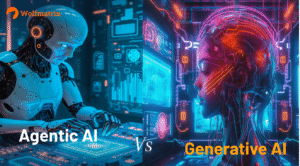In today’s fast-evolving academic landscape, the role of AI in educational institutions is no longer futuristic, it’s fundamental. As educators face mounting administrative workloads and increasing student demands, AI has emerged as a transformative force that empowers teachers, streamlines operations, and enriches learning outcomes.
Teacher burnout is not just a buzzword it’s a growing global crisis. According to HP’s 2024 Education Technology Report, educators spend up to 60% of their time on non-teaching tasks like grading, attendance, and reporting. That leaves little time for what truly matters, connecting with students.
This is where the role of AI in educational institutions becomes pivotal.
How AI Empowers Educators
1. Automated Grading & Feedback
AI-powered tools like Gradescope and Turnitin help educators instantly grade assignments and generate personalized feedback, saving countless hours of manual effort.
2. Classroom Analytics
Tools like IBM Watson Education analyze student engagement, participation, and learning progress in real-time. These insights help teachers adapt their teaching strategies to better suit individual and class-wide needs.
3. Customized Lesson Planning
AI can recommend lesson plans, activities, and even interactive quizzes based on students’ performance data, learning preferences, and curriculum goals. This results in personalized learning journeys for students.
4. Streamlined Administrative Work
Administrative overheads are a major reason for burnout. With AI automating routine compliance reports, attendance records, and timetable adjustments, teachers get back what they need most time.
Why the Role of AI in Educational Institutions matters?
The impact of AI goes beyond the classroom. Here’s why it matters institution-wide:
- Reduces teacher turnover by eliminating burnout
- Improves academic outcomes through tailored teaching
- Enhances institutional reputation, attracting students and funding
- Boosts productivity and operational efficiency across departments
A study by HolonIQ predicts that AI in education will become a $25 billion industry by 2026. Schools and colleges that invest now will lead the future of education.
Practical use cases you can implement
- AI Chatbots to answer student queries
- AI Proctoring Tools to monitor exams remotely
- AI-Driven LMS (Learning Management Systems) to track progress
- Speech Recognition to transcribe and translate lectures
If you’re looking to introduce AI to young learners in a way that’s fun, engaging, and future-focused, check out our initiative, Kidncode’s-a platform that introduces coding and AI concepts to children through interactive learning. It’s the perfect example of how AI education can begin early and evolve meaningfully.
If you’re planning to digitally transform your educational institution, we recommend exploring solutions like custom software development. You can learn more from our product development approach at Wolfmatrix’s blog.




